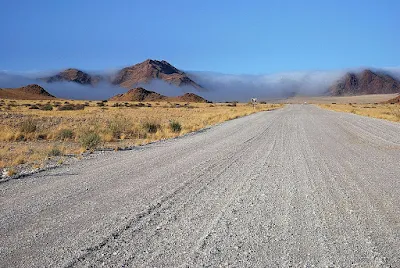15+ Interesting facts About the Namib Desert
- The Namib is a cold coastal desert along the Atlantic Ocean in southwestern Africa. Its major portion is in Namibia, while small parts are in Angola and South Africa.
- The Namib is the only true desert in southern Africa and one of the two major coastal deserts (along the Atacama Desert in South America) in the world. It has no surface water and receives less than 8 inches of precipitation annually.
- The Namib is the oldest desert in the world. According to scientific estimates, it formed at least 55 million years ago.
- The temperature of the Namib Desert remains mild near the coast throughout the year, ranging between 10 and 16 C. In inland areas, the temperature usually remains higher than 30 C during summer. It can also exceed 38 C for some days under the influence of winds blowing from the east.
- The Namib Sand Sea, the sandy part of the Namib Desert, became a UNESCO World Heritage site in 2013. It is famous for having two dune systems and numerous wild animals.
- Dew
and fog are the main sources of moisture in the Namib Desert. The desert
depends primarily on the ocean, groundwater, and soil water for fog. The
abundance of moisture makes it one of the most biologically diverse deserts in
the world. (Source)

Namib Desert supports animal and plant life due to heavy fog - The coastal region of the Namib Desert receives fog for only 40 days a year on average. However, it supports rich animal life, including marine birds (pelicans, flamingos, and penguins) and mammals (jackals, seals, and rodents).
- Other parts of the Namib also contain several animals. There are large mammals (elephants, rhinos, hyenas, and lions) in the northern Namib along the riverbanks. Outer Namib supports many insects and reptiles, while Inner Namib has a healthy population of ostriches, zebras, and antelopes.
- The Namib Desert is one of the two places (alongside the Gourma region in Mali) that host desert elephants. These desert-dwelling elephants live near rivers and have adapted to the desert life. Their big feet assist them to work for hundreds of kilometers in search of food and water, while they can survive without water for days.
- The most striking place in the Namib-Naukluft National Park is Sossusvlei, a flat area covered with salt and clay. Its nearby area is known as Dead Vlei (dead marsh) due to dead trees of more than 1,000 years old. These skeleton trees cannot decompose due to the extreme dryness of this place. (Source)
- The southern part of the desert along the coast experiences vast sand seas. Orange River and other rivers are the sources of this sand. These rivers flow from escarpment but never reach the sea.
- Dunes in the coastal regions are up to 20 miles long and can reach 200 to 800 feet. These are among the tallest dunes in the world.
- A Namibian-German artist, Max Siedentopf, established an installation in an undisclosed location in the Namib Desert in 2019. He used solar batteries to power this installation that only contains his song “Africa”. He expects that the song will play for an indefinite period. (Source)
- Namib-Naukluft National Park is the largest national park in Africa and one of the largest in the world. The park covers an area of more than 19,000 square miles, and its major portion contains the Namib Desert. Its main attractions are towering dunes, gravel plains, mountains, canyons, salt pans, and wildlife.
- Welwitschia, a plant endemic to the Namib Desert, is the world’s most geographically restricted gnetophyte species. Some of these plants can live for up to 2,000 years.
- Several areas in the Namib Desert are rich in plant life due to separate features. There is succulent vegetation in the coastal region (due to fog) and the southern area (due to winter rainfall). The dunes of the inner Namib support tall grasses and bushes, while large trees grow along the river channels.
- Rossing Uranium Mine in the Namib Desert produces nearly 7% of the world’s uranium. This mine opened in 1976 and supplied raw materials for bombs and civil nuclear power during the 1970s to the US and British military. (Source)
- Sperrgebiet in southern Namib (southwestern Namibia) is a diamond-rich area in the desert. The German colonial government closed this area to the general public in 1908 after the discovery of diamonds. This prohibition lasted till the beginning of the 21st Century, resulting in its unique flora. The diamond from this area accounted for over 20% of the total gem diamond production in 1977. Namibia opened this area as the Sperrgebiet National Park in 2009.



Comments
Post a Comment